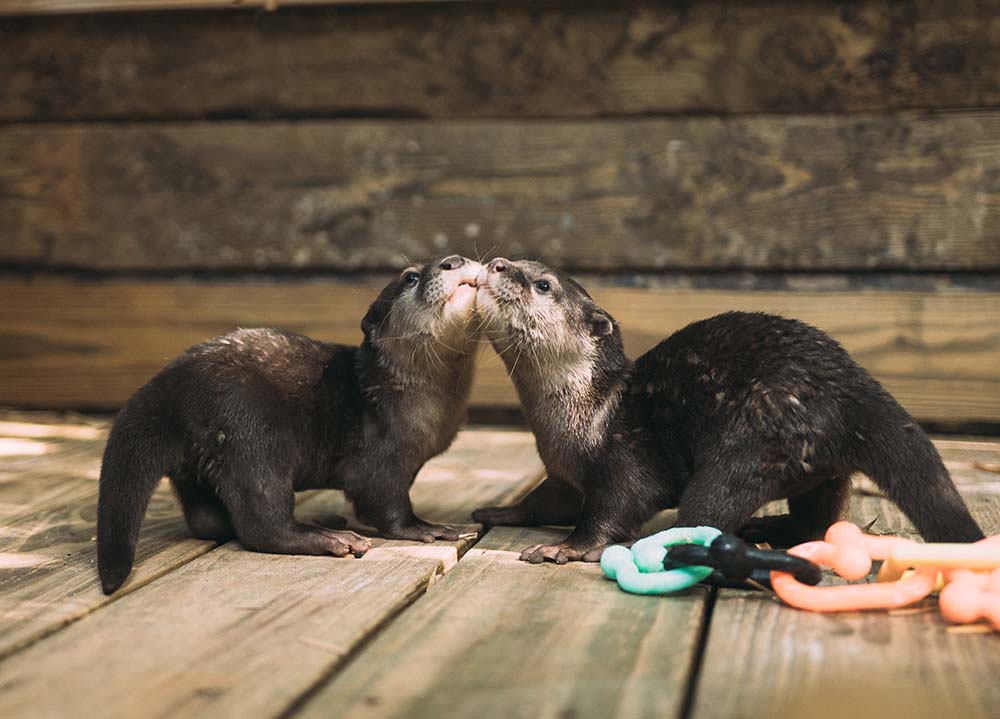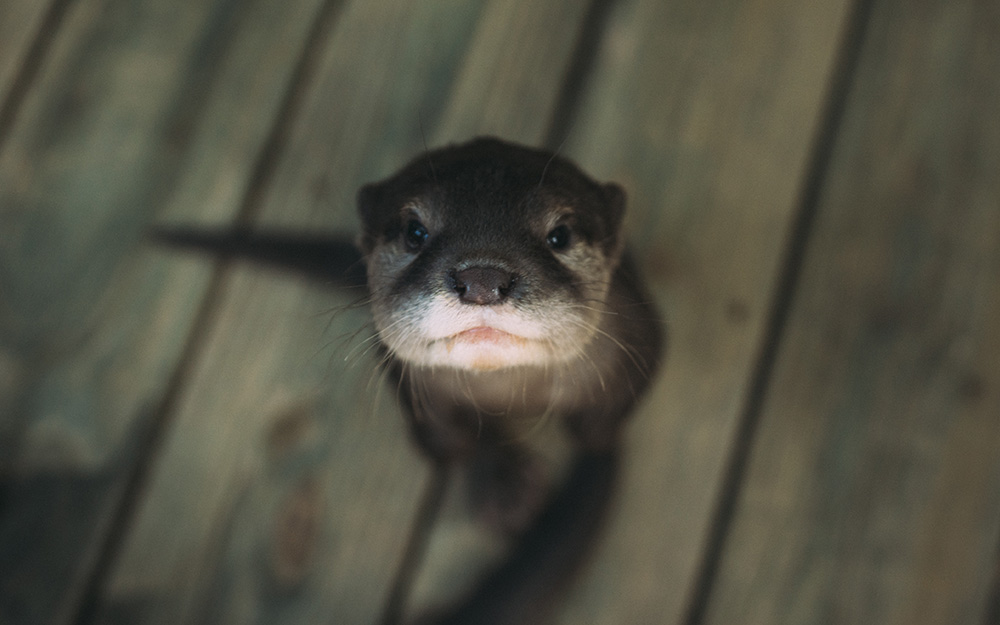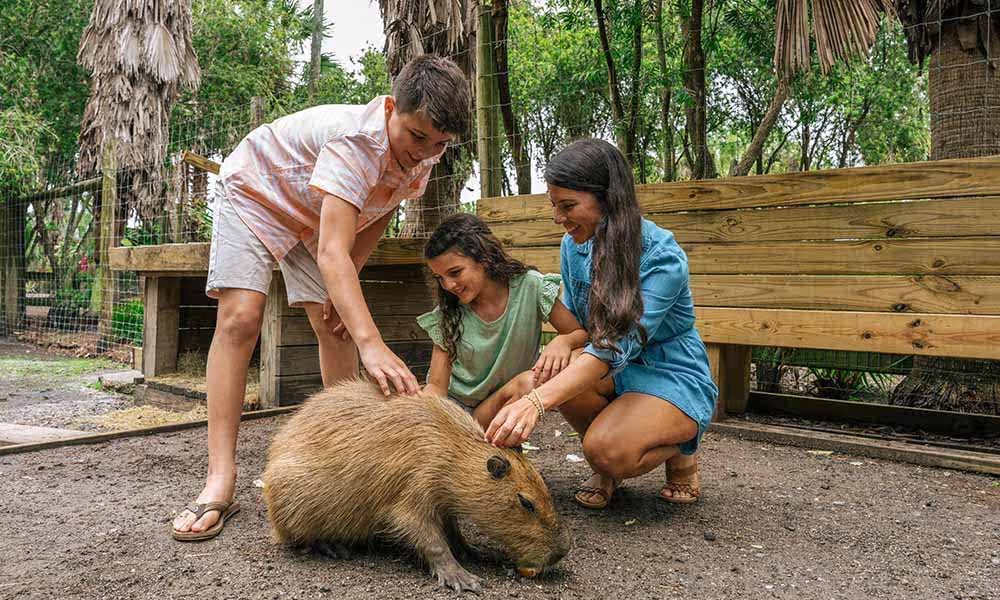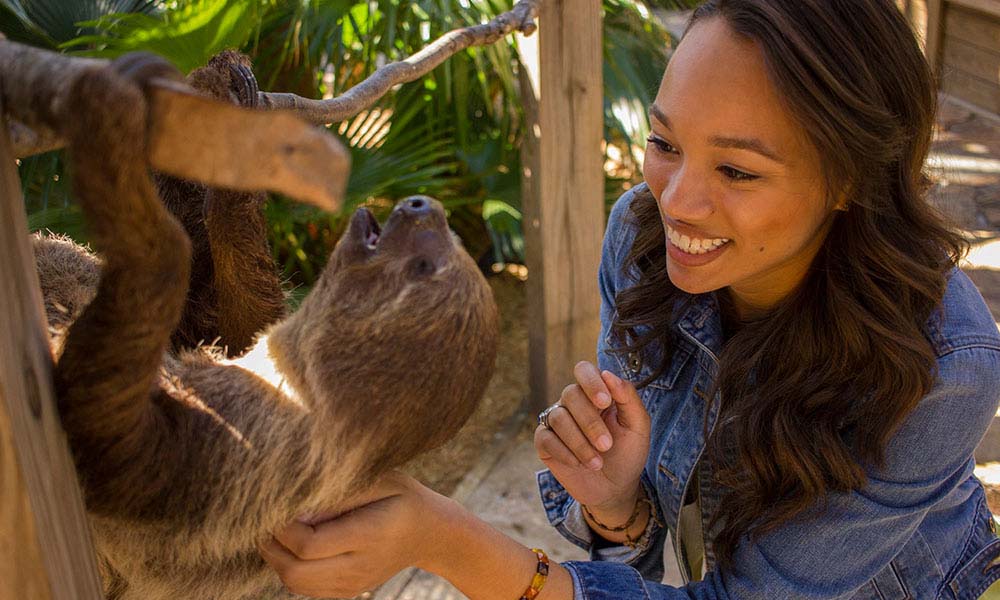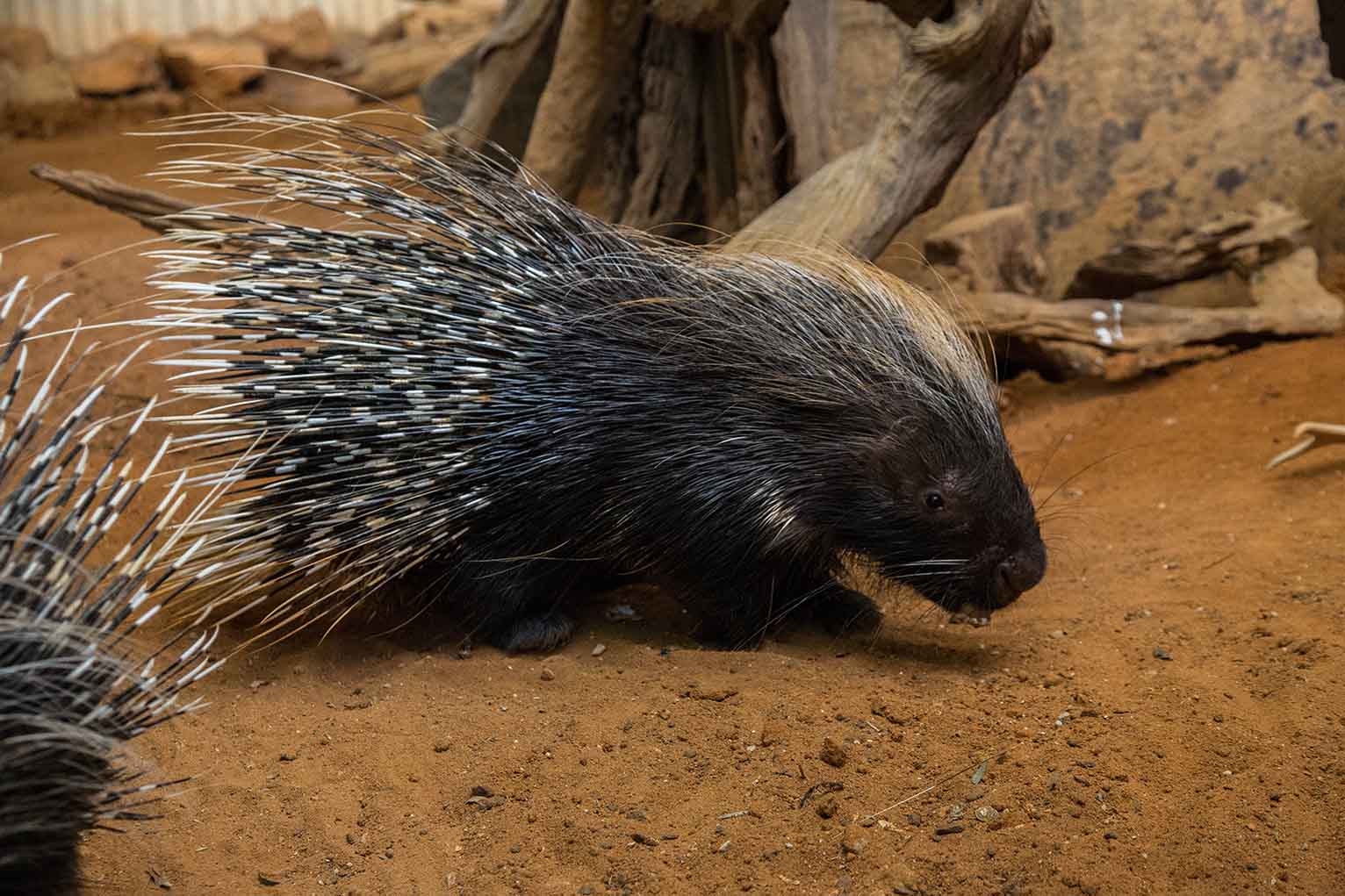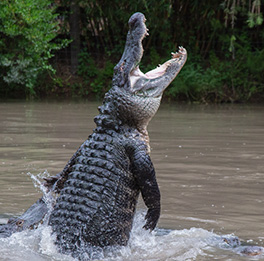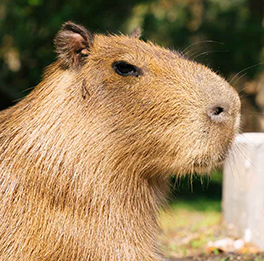What is a Reticulated Giraffe?
The reticulated giraffe (Giraffa reticulata) is one of the most iconic and easily recognized giraffe species. It’s known for its striking coat pattern made up of large, reddish-brown patches outlined by bright white lines. This design gives the giraffe a net-like appearance, which is exactly what the word “reticulated” means!
As one of the four main types of giraffes, the reticulated giraffe is also the tallest land mammal, with males growing up to 18 feet tall. Despite their size, giraffes are one of the most gentle and graceful animals in the animal kingdom.
Where do Giraffes Live?
Reticulated giraffes are native to the dry savannas and open woodlands of northeastern Africa, mainly in northern Kenya, with smaller populations in southern Ethiopia and Somalia. These habitats offer the scattered trees and shrubs that giraffes rely on for food and shade.
Unlike animals that migrate, giraffes usually stay within a home range and follow food and water sources throughout the year. They’ve adapted well to semi-arid climates, where heat is high and greenery can be limited.
Many reticulated giraffes now live in protected areas like Kenya’s Samburu National Reserve, where conservation efforts help protect their future.
What do Giraffes Eat?
Reticulated giraffes are herbivores that spend much of their day foraging in the treetops. They typically spend 12 to 16 hours a day browsing for food. Instead of chewing each bite, giraffes use their thick saliva to help swallow leaves whole.
Here’s what’s on a giraffe’s menu:
- Leaves (especially from acacia trees)
- Buds and flowers
- Fruits and seedpods
- Young shoots and twigs
With a tongue that can stretch up to 20 inches, giraffes can wrap around thorny branches for food easily. They get most of their water from plants, drinking only every few days.
Their favorite meals come from tall, thorny trees that other animals can’t reach. This adaptive feeding style helps them avoid competition with other grazing African animals.
What is an American Alligator?
The American alligator (Alligator mississippiensis) is a reptile species that dates back approximately 150 million years! There are only two kinds of alligators in the world: the American alligator and the much smaller Chinese alligator. Of the two, the American is the heavyweight.
Our guests often ask what the difference between an alligator and a crocodile is, but there are easy ways to tell them apart:
.png)
American alligators are built for stealth. Their strong tails help them glide through the water, and their backs are covered in bony armor plates called scutes. Inside those powerful jaws, they carry around 80 teeth at a time and can go through more than 3,000 in a lifetime!
Where do American Alligators Live?
American alligators live in freshwater habitats like swamps, marshes, rivers and lakes. They prefer slow-moving or still water with plenty of vegetation to hide in.
Most alligators are found in Florida and Louisiana, with Florida home to an estimated 1.3 million alligators across all 67 counties. You can also spot them in parts of Georgia, Alabama, Mississippi, Texas and as far north as coastal North Carolina.
Unlike crocodiles, alligators can’t tolerate saltwater for long. Since they lack salt glands, they stick to freshwater for survival.
What do American Alligators Eat?
American alligators are carnivores and ambush predators. Instead of chasing prey, they stay almost completely still in the water, waiting for the perfect moment to strike. Smaller animals are swallowed whole, while larger ones are shaken apart or spun in a powerful death roll to break them down.
Here is some of what these giant reptiles feast on:
- Fish and frogs
- Snails and turtles
- Birds
- Sammals like raccoons and deer
- Carrion (already dead animals)
American alligators also have one of the strongest bite forces in the animal world. For comparison, the average human bite is about 170 pounds per square inch (PSI), while a lion’s bite reaches around 1,000 PSI. An alligator’s bite force can soar to 3,000 PSI.
That’s strong enough to snap a turtle shell!
What is a Ring-tailed Lemur?
The ring-tailed lemur (Lemur catta) is one of Madagascar’s most iconic animals, and for good reason. With black and white striped tails featuring exactly 13 rings, they’re easy to spot and hard to forget! Their tails don’t help them grip, but they do help with balance and act like fluffy flags to keep the group connected as they move.
These wide-eyed primates have soft gray fur, white bellies and bold black markings that frame their faces. And those golden-orange eyes? They’re not just beautiful. A special layer in their eyes helps them see in low light, especially at dawn and dusk.
Where Do Ring-tailed Lemurs Live?
Ring-tailed lemurs are found only in Madagascar, an island off the coast of Africa. Scientists believe their ancient ancestors made the journey by floating across the sea on mats of vegetation. Since then, they’ve adapted to a wide range of habitats across the island.
You’ll mostly find them in southern Madagascar, in dry forests, rocky canyons and the island’s famous spiny bush plants. While they’re excellent climbers, ring-tailed lemurs spend much of their time on the ground foraging and sunbathing. At night, they head for the trees to rest and stay safe from predators.
What Do Ring-tailed Lemurs Eat?
Ring-tailed lemurs typically feed on vegetation, but their diet is surprisingly diverse. These opportunistic omnivores enjoy:
- Fruits and berries
- Leaves and flowers
- Bark, sap and tree gum
- Cactus pads and drought-resistant plants
- Insects, bird eggs and small lizards
The ring-tailed lemur’s ability to adjust to seasonal foods, moving from fruits to insects when necessary, makes them one of the most adaptable and widespread lemur species on the island.
In the wild, this varied diet not only fuels the lemurs but also helps spread seeds across Madagascar’s forests, making them vital for the ecosystem.
What is an Asian Small-Clawed Otter?
The Asian small-clawed otter (Aonyx cinereus) is the smallest species of otter in the world, known for its playful personality and tiny, agile paws. Unlike other otters, they spend more time on land and have partially webbed feet, perfect for grasping and digging for objects.
With endless energy and irresistible charm, they've earned a loyal fan club among wildlife lovers and especially our guests at Wild Florida.
Where Do Otters Live?
Asian small-clawed otters are native to Southeast Asia, with wild populations found in:
- Indonesia
- Thailand
- Malaysia
- Vietnam
- India
- Philippines
- Laos
- Cambodia
These otters inhabit freshwater habitats, including rivers, streams, swamps, marshes, rice paddies and mangroves.
Ideal habitats provide abundant food sources, clean water and dense vegetation for shelter.
Sadly, many of these habitats are disappearing due to pollution, overfishing and land development.
This loss of clean water and food sources is a major reason the species is listed as vulnerable, making conservation programs and protected wetlands essential for its survival.
What Do Otters Eat?
Otters are carnivorous, primarily feeding on fish, crustaceans (like crabs), mollusks, amphibians and occasionally small mammals.
Thanks to their nimble fingers, Asian small-clawed otters are great at capturing prey hidden beneath rocks or mud.
One of the most fascinating traits of this species is its cooperative hunting style. Instead of going solo, family groups often work together to herd fish or corner crabs.
This teamwork not only strengthens family bonds but also makes them one of the most efficient hunters among otter species.
What is a Capybara?
The capybara (Hydrochoerus hydrochaeris) is the largest rodent in the world, often described as a supersized guinea pig. Unlike most of its rodent relatives, the capybara is highly social and semi-aquatic, spending much of its life near water. With their calm nature and adorable faces, capybaras have stolen the hearts of thousands of animal lovers worldwide.
Where Do Capybaras Live?
Capybaras are native to South America, with wild populations found in:
- Brazil
- Venezuela
- Colombia
- Argentina
- Peru
- Bolivia
- Paraguay
- Uruguay
As semi-aquatic mammals, capybaras live in wetland environments, including tropical forests, flooded savannas, riverbanks, lakeshores, marshes and swamps. The ideal capybara habitat provides easy access to both dry land for grazing and bodies of water for swimming, cooling off and escaping predators.
In Florida, small populations of escaped or released capybaras have been spotted thriving in the wild. While it’s exciting to see them here, these non-native animals are considered an emerging invasive species, which means they could eventually pose a risk to Florida’s native wildlife and ecosystem.
What Do Capybaras Eat?
Capybaras are herbivores, primarily eating grasses, aquatic plants, reeds and occasionally bark or fruit. Like other rodents, their front teeth grow continuously, so chewing rough plants all day helps wear them down.
One weird fact about capybara diets is that they eat their own poop! This behavior, known as coprophagy, enables them to re-digest partially processed food, extracting additional nutrients like protein and fiber. So, although it might sound gross to us, this evolutionary behavior helps capybaras survive in the wild.
.png)
From their towering legs to their six-foot-long necks, reticulated giraffes are built for browsing treetops and seeing across the savanna.
Let’s break down their size:
- Male height: Up to 18 feet
- Female height: 14 to 16 feet
- Weight: Between 1,500 and 4,200 pounds, depending on sex
- Neck length: About 6 feet
- Tongue length: Up to 18 to 20 inches
To picture their size, imagine standing next to a two-story building. That's about how tall a full-grown male giraffe can be!
At birth, giraffe calves are already about 6 feet tall and weigh between 100 and 150 pounds. Most giraffes reach their full height by age four or five, though their strength and body mass continue to grow into adulthood.
In the wild, giraffes live around 20 to 25 years on average. In protected care, some reach 30 or more with consistent veterinary support and nutrition.
Behaviors, Predators & Conservation
Reticulated giraffes live in groups called towers, often made up of females and calves. Males may travel solo or form small bachelor herds. During the day, giraffes spend their time browsing trees, resting in the shade or slowly walking across the savanna.
Males sometimes engage in necking, swinging their necks against each other to show strength and establish dominance. Their powerful kicks can also stop predators in their tracks. Even lions think twice before picking a fight with these giants.
Their main threats in the wild include:
- Lions
- Crocodiles
- Hyenas
- Poaching and habitat loss
Today, reticulated giraffes are considered endangered. Habitat loss and illegal hunting have caused their numbers to drop, but conservation efforts across Kenya and East Africa are making a difference.
At Wild Florida, guests can join our Giraffe Painting Experience with Leroy, our resident reticulated giraffe. Each booking helps support the Giraffe Conservation Foundation and its work to protect giraffes in the wild!
Size, Weight & Lifespan
These powerful reptiles grow fast and grow big, especially compared to most freshwater animals. Their size varies by sex, with males growing significantly larger than females:
Female length: About 8 feet
Male length: About 11 feet
Weight: Up to 1,000 pounds
Lifespan in the wild: up to 50 years
In professional care, alligators can live even longer; some have been known to live 60 years or more!
Behaviors, Predators & Conservation
American alligators are mostly solitary but become much more vocal during the spring mating season. Males bellow loudly to attract females and warn off rivals, often causing ripples in the water around them.
After hatching, baby alligators stay close to their mother for up to two years in small groups called pods. If you're lucky, you might even hear their high-pitched chirps during an airboat ride!
While adult alligators have few natural predators beyond humans, hatchlings are vulnerable to birds, raccoons, snakes, large fish and even other alligators. A mother’s protection during those early years is key to their survival.
By the 1960s, American alligators were nearly extinct due to overhunting and habitat loss. They were listed as endangered in 1967, but made a full comeback and were removed from the list in 1987. Today, they’re considered one of the greatest wildlife recovery stories in the U.S.
Size, Weight & Lifespan
Body length: About 18 inches
Tail length: Around 22 inches (longer than their body!)
Weight: 5 to 7.5 pounds, about the size of a house cat
Lifespan: Up to 18 years in the wild
In professional care, ring-tailed lemurs receive regular vet checkups, balanced nutrition and enrichment that can extend their lifespan to twenty to thirty years.
Behaviors, Predators & Conservation
Ring-tailed lemurs are highly social animals that live in groups called troops. Troops range from six to thirty members and are led by a dominant female, who stays in charge throughout her life.
These chatty primates are always in communication, using over 15 different vocal calls, scent marks and tail signals to keep the group together. During mating season, males compete using "stink fights." They rub scent from wrist glands onto their tails and wave them at rivals to show dominance.
In Madagascar, predators like the harrier-hawk, buzzard and ground boas are a threat. But the biggest danger comes from the fossa, a fast, cat-like carnivore that’s known for hunting lemurs.
But the biggest challenge ring-tailed lemurs face isn’t from predators. It’s from people. Deforestation and habitat loss are shrinking their wild spaces fast. That’s why conservation work, protected habitats and wildlife education are so important to their survival.
Size, Weight & Lifespan
Though tiny, these otters pack a lot of personality! Here's a closer look at their size, weight and lifespan:
Height: 18–24 inches
Length: 16–24 inches from head to tail
Weight: 6.6–11 pounds (average around 8 pounds)
Lifespan: 8–10 years in the wild, up to 20 years in human care
In the wild, their shorter lifespan is due to natural predators and environmental threats. In professional wildlife facilities, consistent nutrition, veterinary care and a safe habitat can double their years!
Behaviors & Predators
Asian small-clawed otters are highly social, often living in close-knit family groups of up to 12 members.
They “chat” constantly through squeaks, whistles, chirps, and scent markings. These signals help them coordinate hunting, play, and defend their territory.
While it may look like they are just having fun, much of their play is actually practice for hunting skills and building social bonds. Despite their playful personalities, they face threats in the wild from both predators and people.
Natural predators include:
- Large birds of prey
- Crocodiles
- Large snakes
- Monitor lizards
Human-related dangers such as habitat destruction, water pollution and illegal hunting also put their survival at risk.
To stay safe, they rely on teamwork, with family members taking turns keeping watch and sounding alarms when danger approaches. When needed, they can vanish in seconds by diving into the water or slipping into dense vegetation.
Size, Weight & Lifespan
When we say big, we mean it! Capybaras can weigh as much as a large dog or more. Here’s how they measure up:
Height: Up to 2 feet tall at the shoulders
Length: Up to 4 feet from nose to rear
Weight: Typically 77–150 pounds (average around 108 pounds)
Lifespan: 8–10 years in the wild and up to 12 years with expert care
A capybara’s size helps protect them in the wild, but also makes them highly visible. This is why these South American rodents rely on camouflage and group behavior for safety.
Behaviors & Predators
Capybaras are known for their social behavior, often living in groups of 10 to 20 individuals. During the dry season, herds can grow even larger. Some have been recorded to be as big as 100 capybaras!
Despite their gentle nature, wild capybaras must remain alert to predators. Capybara predators include:
- Jaguars and pumas
- Caimans and large snakes like anacondas
- Birds of prey that may target young capybaras
Capybaras are currently listed as a species of Least Concern, which means their population is stable for now. But threats like deforestation, habitat loss and hunting are putting pressure on them in some regions.
Frequently asked questions
Giraffes can run up to 35 miles per hour in short bursts when escaping danger, though they usually walk at a slower, steady pace.
Their tongues are usually dark purple or bluish-black, which helps protect them from sunburn while feeding under the hot sun.
Giraffes sleep for short periods, usually between 30 minutes and 2 hours each day. Staying alert helps protect them from predators, especially in the open savanna. They often sleep standing up but may lie down briefly when they feel safe.
The four main types are the reticulated giraffe, Masai giraffe, northern giraffe and southern giraffe. Each has a unique coat pattern and ranges across different parts of Africa.
Not exactly. Alligators aren’t dinosaurs, but they’re closely related. Both evolved from ancient reptiles called archosaurs over 150 million years ago.
Not exactly. Alligators go into a state called brumation during colder months. They slow down, eat less and may stay in burrows or dens until it warms up.
Surprisingly, yes! Young alligators and even some adults have been spotted climbing trees, especially to bask in the sun or escape rising water.
Alligators can sprint up to 9 mph on land, but only for short bursts. They rely more on ambush than long chases.
Most lemurs are red-green colorblind because their eyes lack the cone cells needed to detect those colors. They can still see blues and yellows, which helps them find fruit and navigate their environment.
It is estimated that fewer than 2,000 to 2,500 ring-tailed lemurs remain in the wild. They are classified as endangered due to habitat loss, hunting and the illegal pet trade.
Lemurs are quite intelligent. They have good problem-solving skills, long-term memory and can learn through observation. Some species have even shown the ability to use tools or solve basic puzzles!
Lemurs aren't monkeys. They are a part of a primate group called prosimians. Prosimians have wet noses and a good sense of smell, and they use scent as a means of communication.
Yes, Asian small-clawed otters have scent glands at the base of their tails that produce a musky odor, especially when marking territory.
Plus, their diet of fish, crabs and shellfish can add a strong, fishy smell to their fur.
Not usually, but they can be nippy. They use their teeth for feeding and communication, so they may bite if startled or overstimulated.
In the wild, they rely more on vocal warnings and group behavior than outright aggression.
They’re one of the most vocal otter species, using squeaks, whistles, chirps and growls to communicate. These sounds signal play, bonding or warnings to their family group.
No. They require large spaces, access to clean water, social interaction with other otters and a diet of fresh seafood.
They are best cared for in professional wildlife facilities or sanctuaries where their needs can be met.
Otters are naturally curious and social, making them seem friendly and engaging.
However, Asian small-clawed otters are wild animals with sharp teeth and specific care requirements, so human interaction should be both respectful and cautious.
Capybaras are very vocal. They use whistles, barks, grunts and chirps to communicate everything from alarm calls to playful chatter with their group.
In some U.S. states, it’s legal to own a capybara. But be warned: they’re not low-maintenance. Capybaras need lots of space, constant access to water and capybara companionship (they’re not meant to live alone). While adorable, capybaras are still wild animals that require expert care.
Yes! Capybaras are renowned for their gentle and non-aggressive nature. They get along well with other animals and often enjoy attention from humans, especially when food or gentle scratches are involved!
ADOPT ME!
$25 Bronze Adoption
- Certificate of Adoption
$50 Silver Adoption
- Certificate of Adoption
- Photo of your adopted animal and fact sheet
- A plushy of your adopted animal
$85 Gold Adoption
- Certificate of Adoption
- Photo of your adopted animal and fact sheet
- A plushy of your adopted animal
- Keychain
- 1 encounter with the adopted animal



